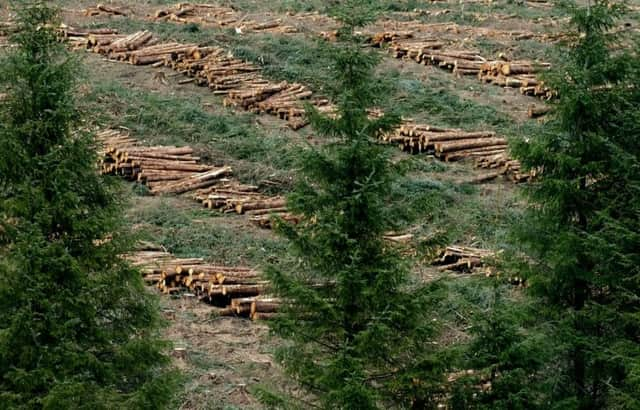Forestry susceptible to winds of change


THE Scottish Government’s consultation on land reform is not targeted at forestry, but like many other sectors, forestry will be affected by what flows from it – as it is affected by many other policies, like climate change, land use and economic development.
Forestry has worked hard for many years to develop a balance between the varied groups with an interest in the sector. This can be a high-wire act at times, and legislation or funding decisions by government can easily create an imbalance and unintended consequences – threatening the forestry sector’s sustainability.
Advertisement
Hide AdAdvertisement
Hide AdForestry has taken a lead on sustainability – seeking to balance the environmental, economic, and social interests of a wide range of interested parties. Both government and voluntary standards for sustainable forest management have emerged from this work. These are widely applied, such that forest owners can point to independent assessment of their stewardship; in return, they look for acknowledgement that forestry practices have come a long way in the last 20 years.
However, the depth of change is not widely recognised, and it is not well understood that for Scotland to be internationally competitive in producing softwood there needs, as with farming, to be a scale of activity. Wood is a vital material at the heart of our homes and its ability to lock up carbon means it is becoming more popular in an environmentally-conscious world. It is estimated global consumption of wood will increase three-fold by 2050.
Confor, on behalf of Scotland’s forestry and wood sector, is talking to rural communities and stakeholders to better understand their perceptions of forestry and explain the sector’s future plans, planting more woodland and harvesting (and replanting) forests created last century. This will create more diverse forests that are better designed to fit into the existing landscape and better for biodiversity.
The economic, rural employment and carbon benefits of the sector’s activity is easy to measure and explain (for example, 40,000 jobs are supported by forestry in Scotland), but the impact of a changing landscape and increased timber transport can be harder for rural communities to come to terms with.
There are many examples where productive forestry delivers clear benefits for rural Scotland. One excellent example is Sleat, in southern Skye, where the Tormore Wood provides income to help keep a filling station and post office open. In north-west Mull, the community works with a forest management company to harvest wood. High-quality wood goes to a sawmill to be made into building products while inferior timber is chipped for fuel and sold locally.
Such examples provide an easy way to demonstrate local benefit. Generally speaking, it is less simple than that. A mature forest provides employment of various kinds – planting trees, thinning, harvesting, road maintenance, transport, etc. These tasks are often carried out by people working across different sectors, so local relevance to the forest is less clear.
Scotland has a diverse forestry sector. Hardwood sawmillers operate small businesses as do craftspeople working with wood. Bigger forests provide the volumes that larger mills require, while still supporting many jobs. Like so many things in life, no one size fits all. There is no one solution and, in a sustainable world, no single perspective should dominate others.
In 2015, the forestry and wood sector will step up its engagement with rural communities and do more to explain why it is such a vital rural industry. A first step was to participate in the inaugural Rural Parliament for Scotland in Oban. Confor’s stand was busy and a seminar discussed perceptions of the sector. Most people had a specific interest in forestry but virtually everyone recognised that forests are important for many reasons.
Advertisement
Hide AdAdvertisement
Hide AdScotland’s forests are in a quite unique position in that they provide so many benefits to so many different people at the same time. This partly explains why so many policies can impact profoundly on our woodland.
For example, the Scottish Government’s Economic Strategy highlights the need for a successful transition to a low-carbon economy as well as harnessing the strength and quality of our communities – in the context of building an environment to support business growth. Forestry can deliver on all these points.
So far, we have found a reasonable, sustainable balance. Hopefully, with an informed perspective by Holyrood, that balance can be maintained into the future.
• Stuart Goodall is Chief Executive of Confor: promoting forestry and wood